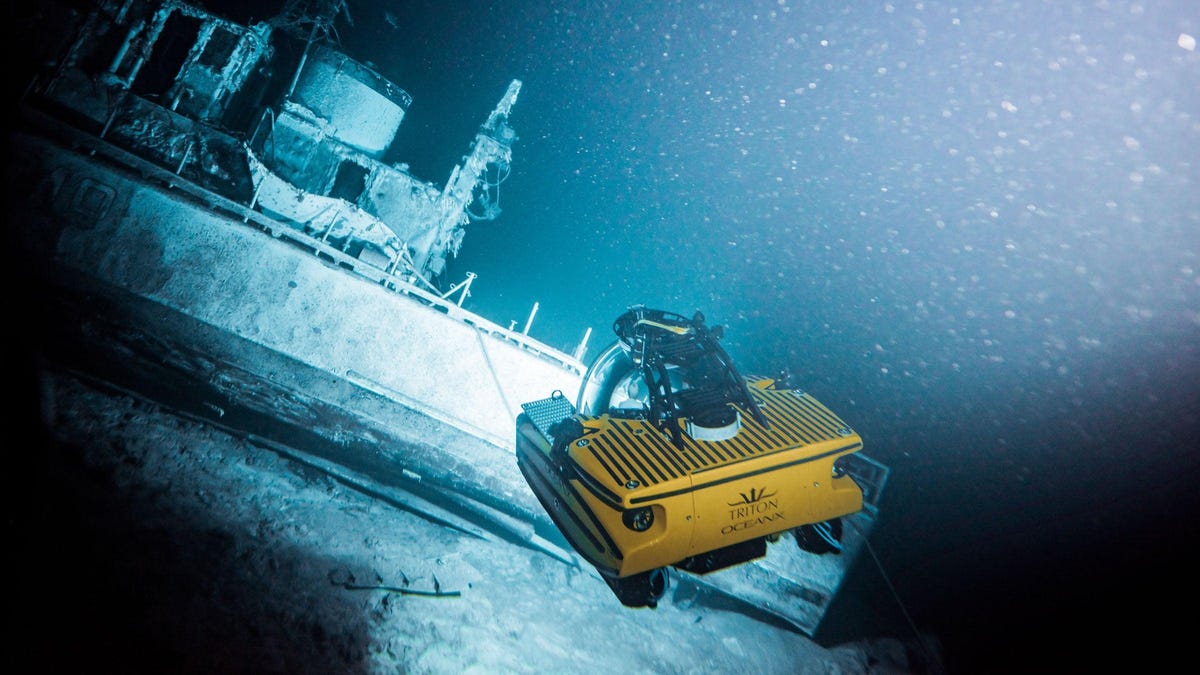An Ohio real-estate magnate is planning to take his own two-person submersible down to Titanic wreckage-level depths to show the journey can actually be done safely following the deadly implosion of the OceanGate Titan submersible in June of 2023. These rich guys never really learn do they?
The Wall Street Journal spoke with members of the “Triton Submarines” team about their ambitions to show the world that submersibles are actually safe and not metal coffins. Right off the bat, I hate how close “Triton” is to “Titan,” but that’s beside the point. One of the lead investors, the aforementioned real-estate investor, named Larry Connor has been all the way down to the Mariana Trench, and he plans to take the sub on a journey with company co-founder and CEO Patrick Lahey. Here’s what he said to WSJ:
“I want to show people worldwide that while the ocean is extremely powerful, it can be wonderful and enjoyable and really kind of life-changing if you go about it the right way,” Connor says by phone.
He and Lahey plan to make the Titanic journey together in a two-person vessel. “Patrick has been thinking about and designing this for over a decade. But we didn’t have the materials and technology,” Connor says. “You couldn’t have built this sub five years ago.” Called the Triton 4000/2 Abyssal Explorer, it’s listed on the company’s website for $20 million. The “4000” represents the depth it can dive to in meters. Notably, Titanic rests at 3,800 meters.
Connor says he isn’t afraid of the deep. But he’s not fearless. Just the night before our call, he says he had a fright while driving home to his farm: “I almost hit a deer. I was going probably 60 miles per hour. That was scary.”
There’s a big elephant in the room of the very small deep-water submersible community right now, and it’s the implosion of Stockton Rush’s Titan sub. A catastrophic event like that can leave a bad taste in a lot of folks’ mouths, but not these two. They saw it as a bit of an opportunity. From the Wall Street Journal:
“He called me up and said, ‘You know, what we need to do is build a sub that can dive to [Titanic-level depths] repeatedly and safely and demonstrate to the world that you guys can do that, and that Titan was a contraption.’”
[…]
As Lahey and his peers see it, OceanGate’s problems weren’t broader submersible problems. They say classed subs are considered exceptionally safe modes of transportation thanks to rigorous testing of designs and materials.
“In that sense, OceanGate didn’t make the industry look bad,” says McCallum. “It made us look good.”
After OceanGate officially announced it was suspending its operations in July of 2023, both Triton and its main competitor, Netherlands-based U-Boat Worx worked to differentiate their subs from the doomed OceanGate vessel. Here’s what they did:
The companies say they needed to drive home the key differences between “classed”—certified as safe and up to code—and “unclassed” subs. Both Triton and U-Boat Worx use third-party maritime-classification societies to ensure that their machines are classed, and Eyos uses only classed subs for its chartered voyages. Titan, on the other hand, was unclassed and built using experimental designs and materials such as carbon fiber that were prone to cracking after repeat dives.







